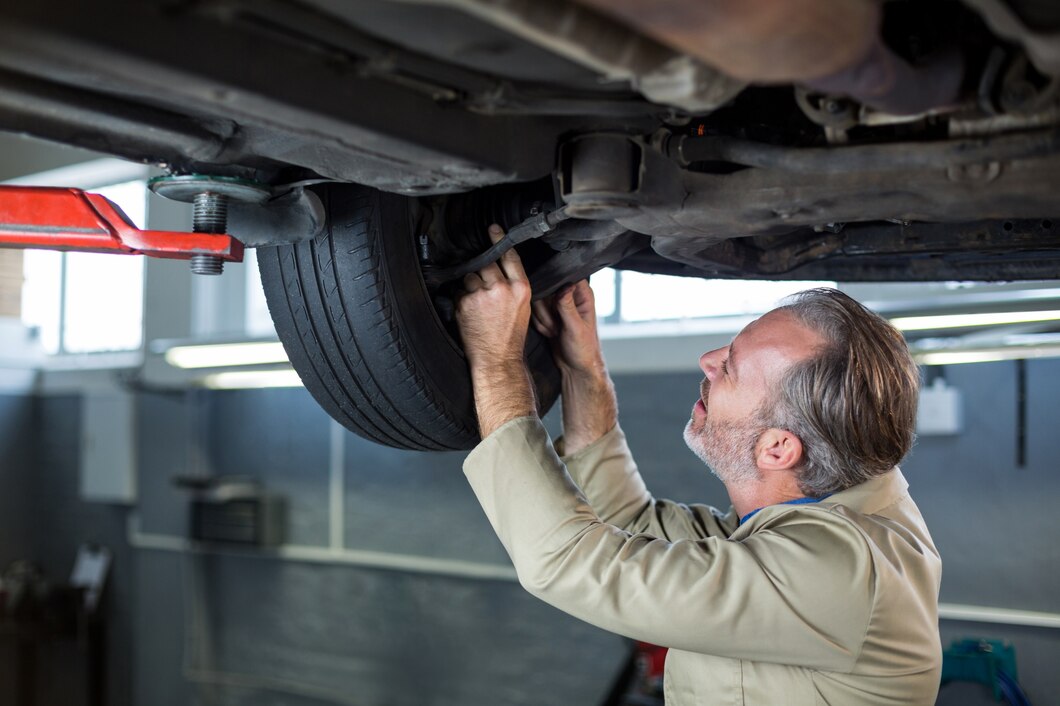The rear axle is a crucial component of your vehicle’s drivetrain, responsible for transmitting power from the transmission to the wheels, enabling motion. A failing rear axle can compromise your car’s performance and safety, leading to more severe mechanical problems if not addressed promptly. Identifying the early signs of a failing rear axle can save you from expensive repairs and dangerous situations. Here are some key indicators to watch out for:
1. Unusual Noises
One of the most common signs of a failing rear axle is unusual noises emanating from the rear of your vehicle. These noises can include clunking, clicking, or grinding sounds, particularly when accelerating, decelerating, or turning. Such sounds often indicate that the axle or its components, such as bearings or joints, are worn out or damaged.
2. Vibrations and Shaking
Excessive vibrations or shaking while driving, especially when accelerating or turning, can signal a problem with the rear axle. These vibrations may originate from an imbalanced or bent axle shaft. If the vibrations are particularly noticeable in the steering wheel or seat, it’s crucial to have your vehicle inspected immediately.
3. Leaking Fluid
A leaking differential or axle seal can be a sign of rear axle trouble. If you notice puddles of gear oil under your car, particularly near the rear axle, it could indicate that the seals are failing. Gear oil has a distinct smell and is typically thicker and darker than engine oil. Leaking fluid can lead to inadequate lubrication of the axle components, causing further damage.
4. Difficulty Turning
A failing rear axle can cause difficulty when turning your vehicle. If you experience resistance or hear noises while making turns, it could be due to worn-out axle components. The increased resistance may be more noticeable when making sharp or tight turns.
5. Uneven Tire Wear
Uneven tire wear, particularly on the rear tires, can indicate an issue with the rear axle. Misalignment or damage to the axle can cause the tires to wear unevenly. If you notice one tire wearing down faster than the others, it’s essential to have your rear axle and alignment checked by a professional.
6. Delayed Acceleration
If your vehicle experiences delayed or sluggish acceleration, it might be due to a failing rear axle. A damaged axle can struggle to efficiently transfer power from the engine to the wheels, leading to reduced acceleration and overall performance.
7. Visible Damage
Regular visual inspections of your vehicle’s underside can reveal visible damage to the rear axle. Look for cracks, bends, or other signs of physical damage to the axle shaft or housing. Any visible damage warrants immediate attention from a mechanic.
Preventive Measures
To prevent rear axle failure and ensure your vehicle remains in optimal condition, regular maintenance and inspections are crucial. Here are some tips:
- Routine Inspections: Have your rear axle inspected during regular maintenance checks. A professional can identify early signs of wear or damage that you might miss.
- Check Fluid Levels: Ensure that differential and axle fluids are at the correct levels and are changed according to the manufacturer’s recommendations. Proper lubrication is key to preventing axle wear.
- Monitor Tire Condition: Regularly check your tire condition and ensure they are properly inflated and aligned. Uneven tire wear can indicate underlying axle issues.
- Address Issues Promptly: If you notice any of the signs mentioned above, seek professional assistance immediately. Addressing axle problems early can prevent more extensive damage and costly repairs.
Recognizing the early signs of a failing rear axle can help you maintain your vehicle’s performance and safety. Unusual noises, vibrations, fluid leaks, and difficulty turning are all indicators that your rear axle may need attention. Regular maintenance and prompt repairs are essential to keep your axle—and your vehicle—in top condition. If you notice any warning signs, don’t hesitate to consult a professional mechanic to diagnose and fix the problem, ensuring a safe and smooth driving experience.











